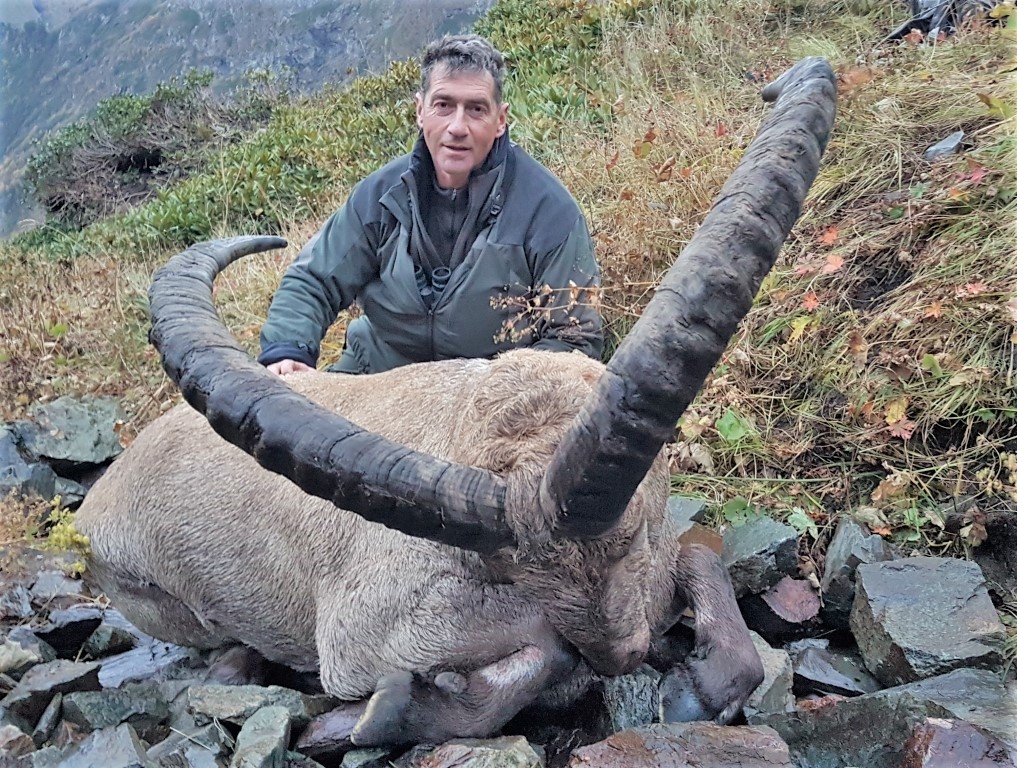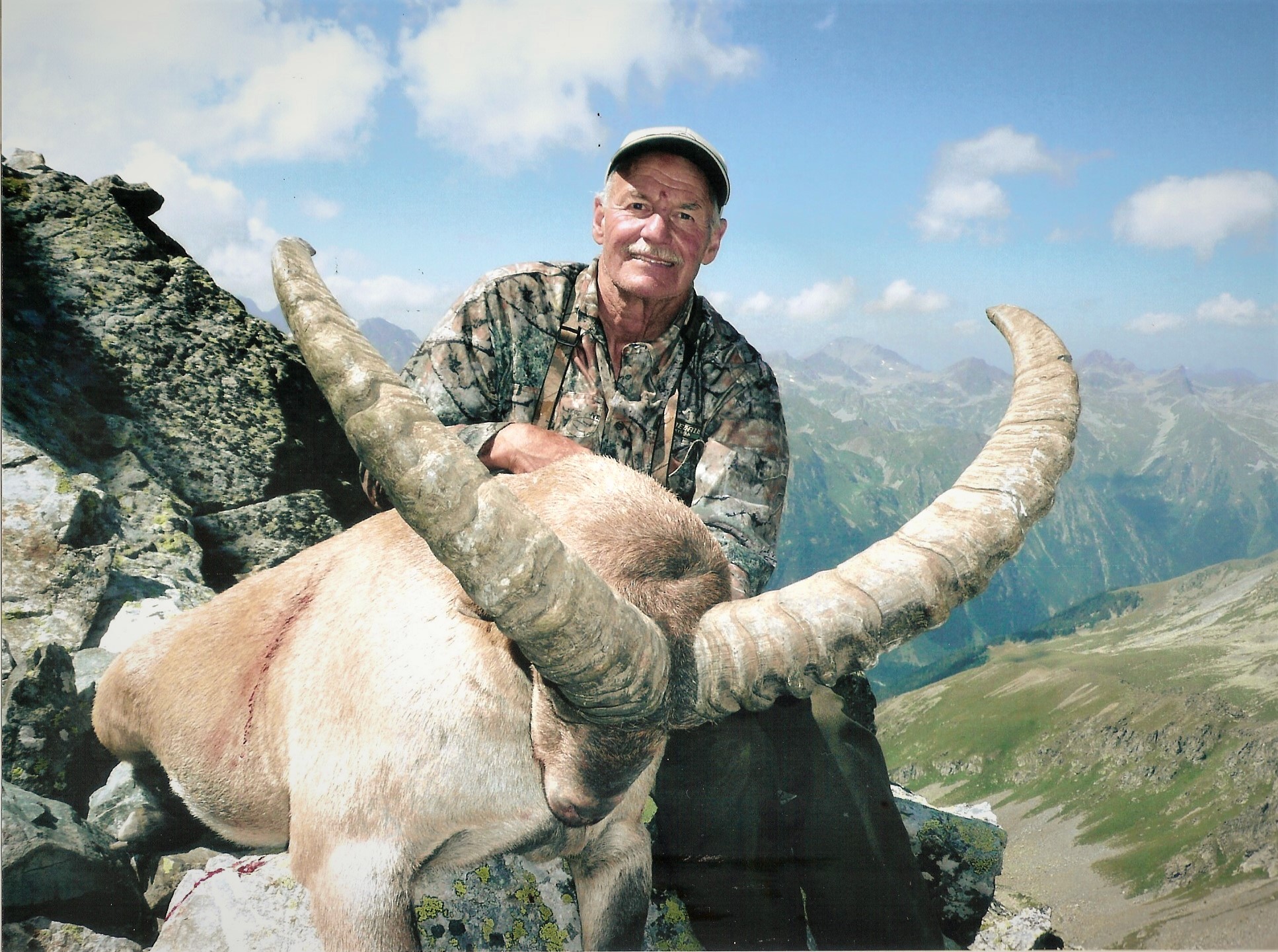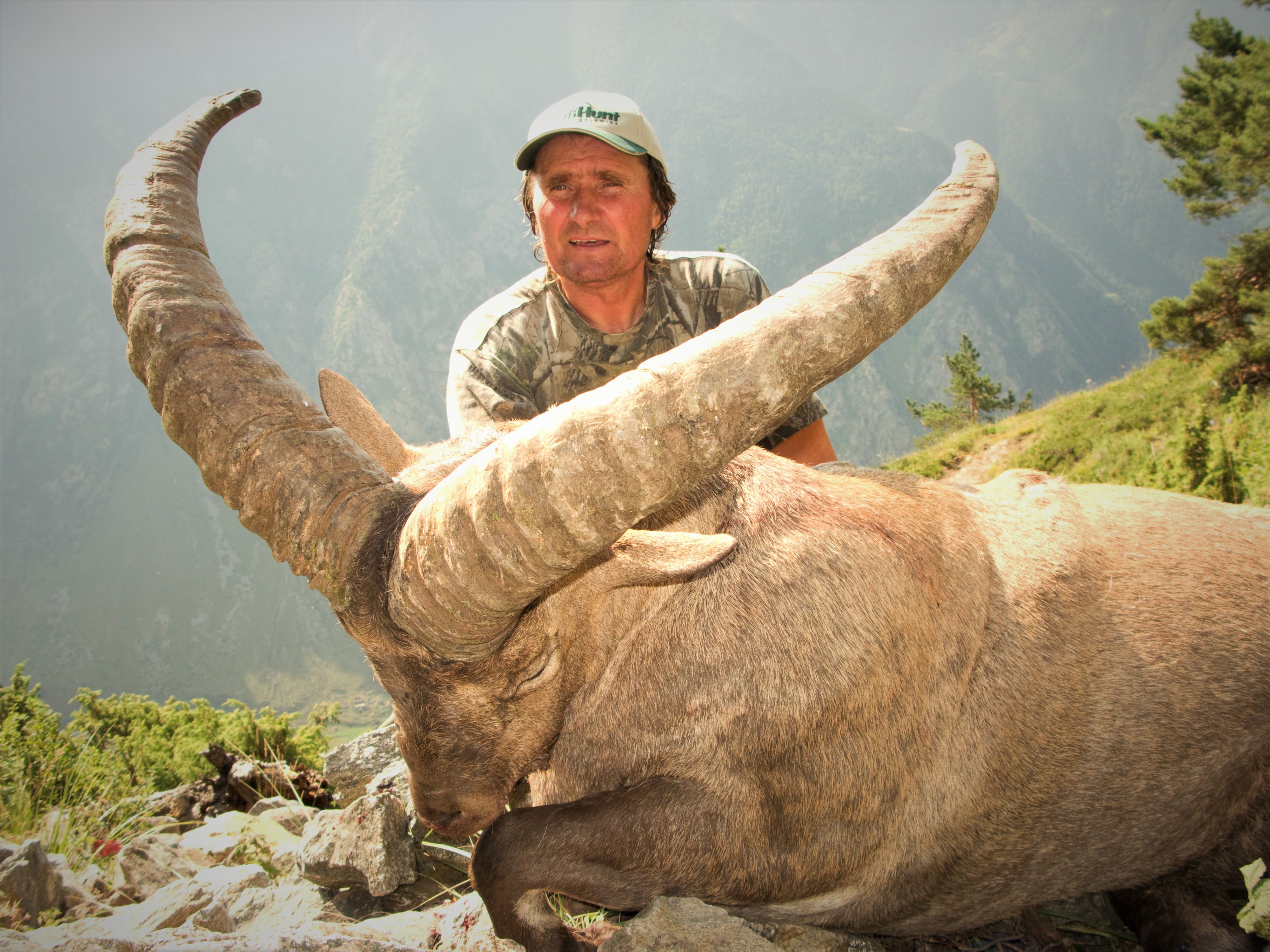KUBAN TUR
Word of “Tur” comes from Russain language meaning Caucasian wild goat. Also known as Western Tur, Kuban Tur is named after the basin of the Kuban river in southwestern Russia in which this subspecies of Tur populate. It also makes sense to call them Western Tur as these animals are indigenous to only western part of the Caucasus mountains.
Kuban Tur occupies one of the smallest distribution areas of all mountain animals. It ‘s range stretches in a relatively narrow stripe for about 250km encompassing about 4000 sq km along the western part of the main Caucasus range, occurring in Russia and Georgia. At its eastern end the distribution range of both Tur, Kuban and Dagestan overlaps and quite often form hybrids.
Our Western Tur hunts in Russian part of the Caucasus take place in Karachaevo Cherkesia district which provides us with several different camps positioned in a number of separate basins. The main territories are located in the valleys of the rivers Askaut, Maruha, Arhyz. In these valleys Kuban Tur can be hunted in combination with Caucasian chamois, either out of the same camp or a nearby camp. As a general rule, tent camps are used to accommodate hunters.
Along with Dagestan Tur hunt, Kuban Tur hunting is considered to be one of the most challenging and thus regarded as the ultimate test for the mountain game hunters. It requires good physical condition as the steep mountain slopes can be taxing for the Tur hunters. The Kuban Tur hunt can require a combination of horseback riding, climbing - walking and glassing until a desirable size Tur is located. Then one last stalk that will put the hunter within a shooting distance will be in order. When not possible, small drives can be applicable
Tur inhabits the steep rocky slopes at elevations of 800-4000 meters ( 2600-13.000’) With an upward thrust in May and a downward retreat in November, animals migrate seasonably covering a vertical distance of 1500-2000 meters. The camps are commonly located at around 1500 – 1800 meters (5000-6000’) . Hunting may take the hunters to higher altitudes at times but these occasions are usually limited at 3000 meters (10000’) .
Although Kuban Tur is protected in 5 main nature reserves and national parks in both countries it inhabits, total population hardly exceeds some 5000-6000 individuals. Animals can be found in herds in varying numbers consist of anything from 3-4 heads to large herds of several hundred. So hunters can observe a good number of Tur to choose from during their hunt.
Westerns Tur is morphologically intermediate between ibex and Eastern (Dagestan) Tur. It bears horns resembling ibex but much shorter and heavier. The horns bent like a scimitar in a single plane and diverge in a wide V from their base. The frontal surfaces of the horns are knobbed strongly but lack the large knobs of the Asian ibex.







